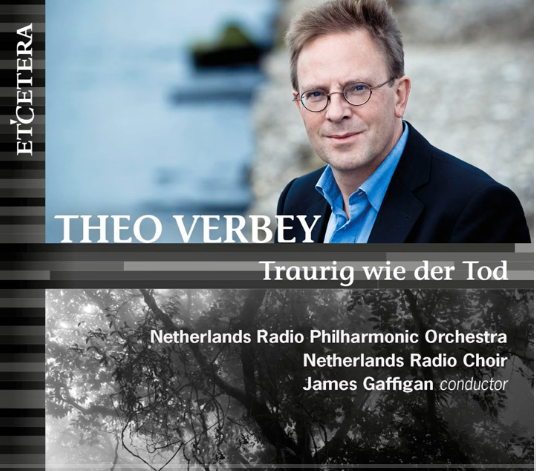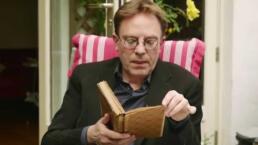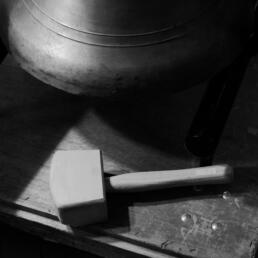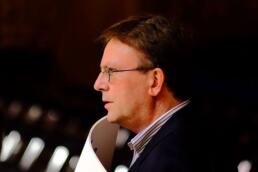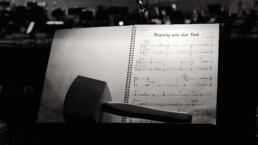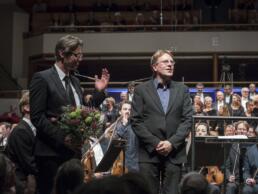Traurig wie der Tod
2014-2015
Details
Duration:
20'
Instrumentation:
2.2.2.4 - 4.2.2.3.1- timp, 3perc[1.Tenor Drum, Tamtam, Triangle 2. Bass Drum 3. 2 Bells in C and G, behind the scene (These bells are the same as in the Symphony Fantastique by Hector Berlioz) - 2hp - str(16.14.12.10.8) Large Mixed Choir SATB
Based on texts by:
Hans Bethge
Commissioned by:
AVROTROS Vrijdagconcert
World premiere:
The Netherlands Radio Choir, the Netherlands Radio Philharmonic Orchestra and conductor James Gaffigan in Utrecht TivoliVredenburg, Utrecht on 29 May 2015
Find on CD:
In Theo's Own Words
“I had been planning for some years to compose a piece for large chorus and orchestra – I had visions of an ‘enormous space in sound’ and a work of considerable duration.
In 2014, the chance arrived. The original title was Elysium: the residence of the Greek gods after their earthly life. When the moment came to actually turn my plans into deeds (the summer of 2014) I seemed to have changed my mind. Profound events such as the deterioration of the health of my mother, but also the disaster involving flight MH17 above Ukraine, were enough reason for me to throw away all the sketches I’d made up to that moment and to begin again. In Die Chinesische Flöte (1907) by Hans Bethge (1876-1946), I found poems that were more in sync with my new plans. The poems are characterized by simple metaphors and especially by a sombre content. I have chosen five poems which fit within the layout of a connected cycle. These are German reinterpretations of ancient Chinese poems by very diverse poets.
In the end, composing the piece took up approximately half a year. The result, Traurig wie der Tod, is a song cycle consisting of five songs alternating with instrumental interludes, which eulogizes sorrow from various perspectives.
In the first song, Mond und Menschen, a sharp distinction is made between the image of nature as stable and unchanging, compared with human beings as being confused and restless. At the end of this song the music accelerates and leads to the first orchestral interlude. The second song, Die Einsame, is about the sorrow and pain of someone who is not near her loved one. After an orchestral eruption, the third song Eine Junger Dichter denkt an die Geliebte is brought back to one stanza in an extremely contrasting idiom. After yet another orchestral interruption, the fourth and fifth songs follow each other directly. The fourth song, Verzweiflung, is a reflection of the second. It’s about the sorrow of tedium in confinement. The fifth song, Das Los des Menschen, has the singularity of our existence as its subject. Existence is like a sigh of the wind and the result of life is like a grave on which weeds grow. The first song is reflected here, both in the text and the music.
The resulting structure of the piece is a palindrome: ABCBA. This applies as well to the musical style: the style of the first song uses the techniques of the twentieth century. Afterwards there’s an abrupt modulation back to the 19th century, in order to end up in an archaic musical form from the early 18th century. Then the route is followed in the opposite direction. “
– Theo Verbey
In Concert
29 May 2015
Netherlands Radio Philharmonic Orchestra, Netherlands Radio Choir, Gaffigan/Berlioz, Verbey
Utrecht, Netherlands
28 May 2015
Netherlands Radio Philharmonic Orchestra, Netherlands Radio Choir, Gaffigan/Berlioz, Verbey
Hilversum, Netherlands
Video
Recording
Interview
Theo Verbey on Traurig wie der Tod: ‘A composer is primarily a songwriter’
Photo
Bethge poems Traurig_plus translation_English
Original poems in German and translated into English.
